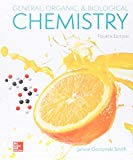
Concept explainers
(a)
Interpretation:
The structure of cyclohexyl ammonium fluoride should be drawn.
Concept Introduction:
Primary, secondary or tertiary
(b)
Interpretation:
The structure of triethylammonium iodide should be drawn.
Concept Introduction:
Primary, secondary or tertiary amines have a lone pair of electrons on N atom. These lone pair can be used to form a bond with a fourth group. When a nitrogen atom is bonded to four groups it has no lone pairs and bears a positive charge. These are called quaternary ammonium ions. In nomenclature of ammonium salts, the name of the substituent precedes the word ammonium and then the name of the anion is written.
(c)
Interpretation:
The structure of ethylmethyammonium chloride should be drawn.
Concept Introduction:
Primary, secondary or tertiary amines have a lone pair of electrons on N atom. These lone pair can be used to form a bond with a fourth group. When a nitrogen atom is bonded to four groups it has no lone pairs and bears a positive charge. These are called quaternary ammonium ions. In nomenclature of ammonium salts, the name of the substituent precedes the word ammonium and then the name of the anion is written.
Want to see the full answer?
Check out a sample textbook solution
Chapter 18 Solutions
Loose Leaf for General, Organic and Biological Chemistry with Connect 2 Year Access Card
- A. Draw the structure of each of the following alcohols. Then draw and name the product you would expect to produce by the oxidation of each. a. 4-Methyl-2-heptanol b. 3,4-Dimethyl-1-pentanol c. 4-Ethyl-2-heptanol d. 5,7-Dichloro-3-heptanolarrow_forwardWhat is the pH of a 1.0 L buffer made with 0.300 mol of HF (Ka = 6.8 × 10⁻⁴) and 0.200 mol of NaF to which 0.160 mol of NaOH were added?arrow_forwardCan I please get help with this.arrow_forward
- Determine if the following salt is neutral, acidic or basic. If acidic or basic, write the appropriate equilibrium equation for the acid or base that exists when the salt is dissolved in aqueous solution. If neutral, simply write only NR. Be sure to include the proper phases for all species within the reaction. N₂H₅ClO₄arrow_forwardPlease help me with identifying these.arrow_forwardCan I please get help with this?arrow_forward
 Chemistry for Today: General, Organic, and Bioche...ChemistryISBN:9781305960060Author:Spencer L. Seager, Michael R. Slabaugh, Maren S. HansenPublisher:Cengage Learning
Chemistry for Today: General, Organic, and Bioche...ChemistryISBN:9781305960060Author:Spencer L. Seager, Michael R. Slabaugh, Maren S. HansenPublisher:Cengage Learning Organic And Biological ChemistryChemistryISBN:9781305081079Author:STOKER, H. Stephen (howard Stephen)Publisher:Cengage Learning,
Organic And Biological ChemistryChemistryISBN:9781305081079Author:STOKER, H. Stephen (howard Stephen)Publisher:Cengage Learning, General, Organic, and Biological ChemistryChemistryISBN:9781285853918Author:H. Stephen StokerPublisher:Cengage Learning
General, Organic, and Biological ChemistryChemistryISBN:9781285853918Author:H. Stephen StokerPublisher:Cengage Learning- Chemistry: Matter and ChangeChemistryISBN:9780078746376Author:Dinah Zike, Laurel Dingrando, Nicholas Hainen, Cheryl WistromPublisher:Glencoe/McGraw-Hill School Pub Co



